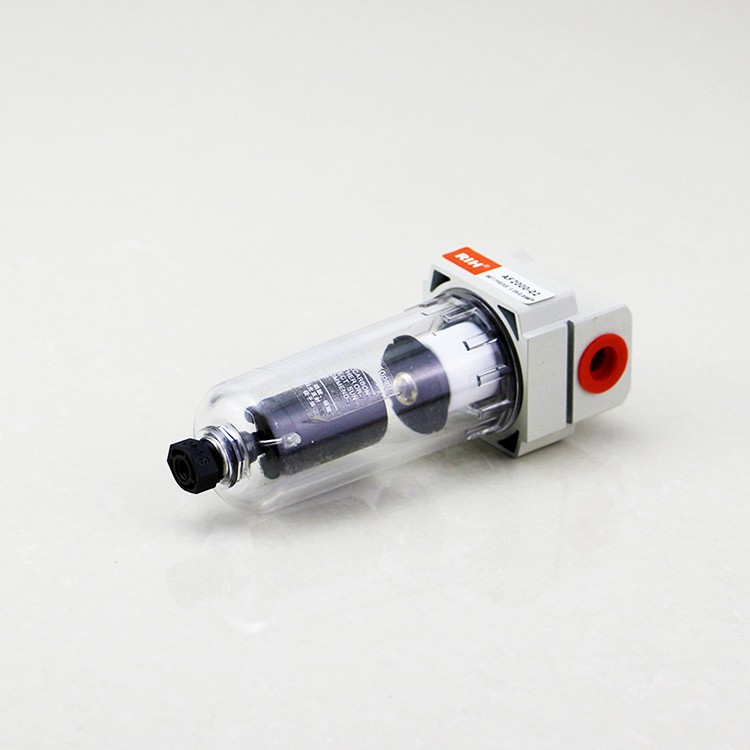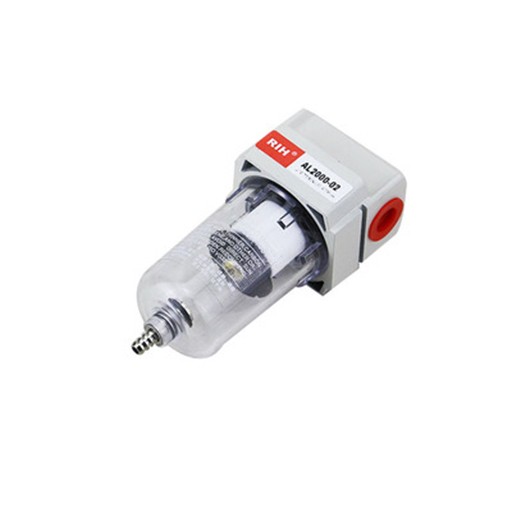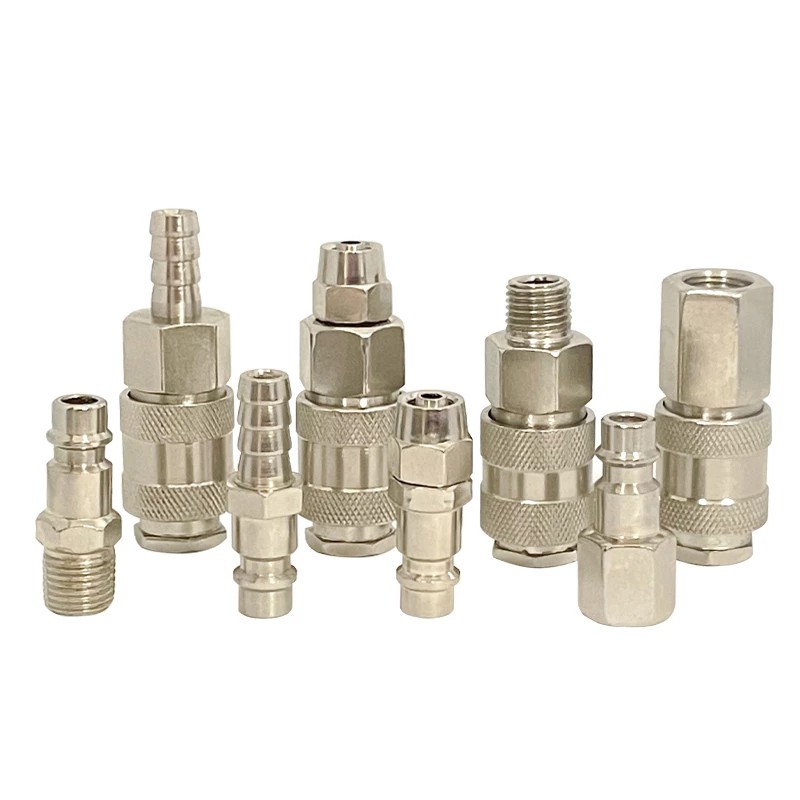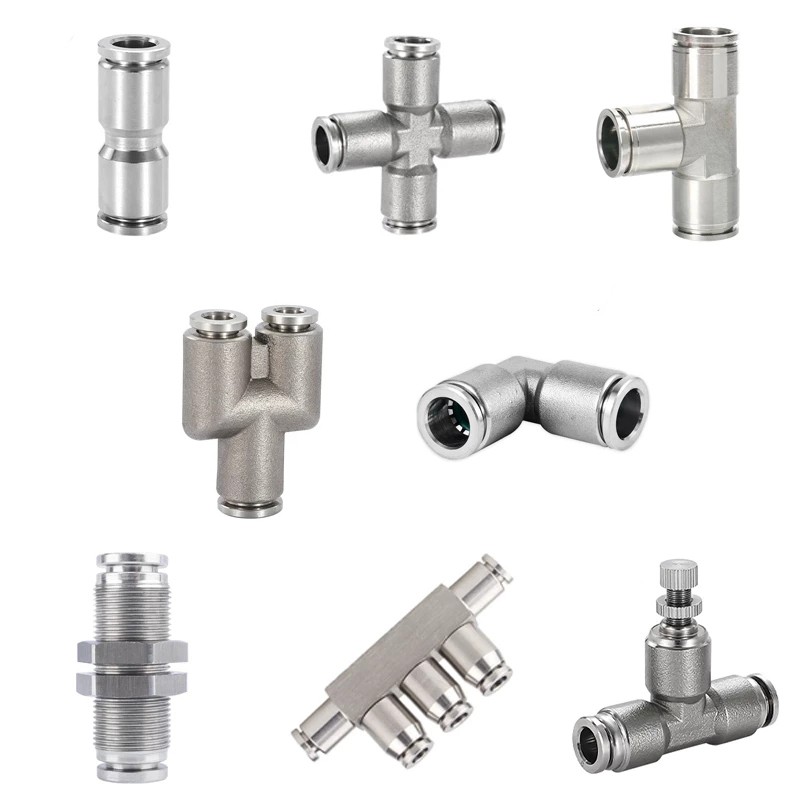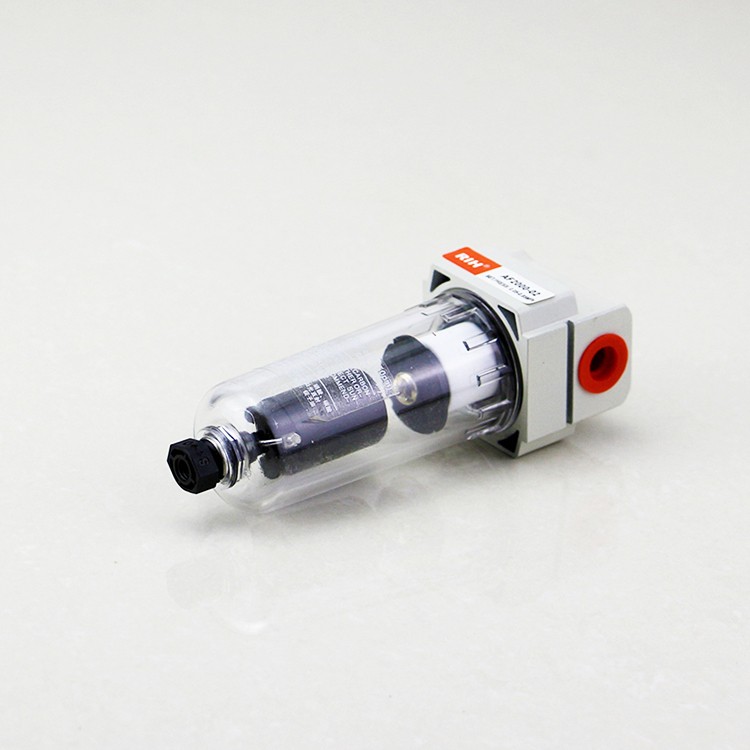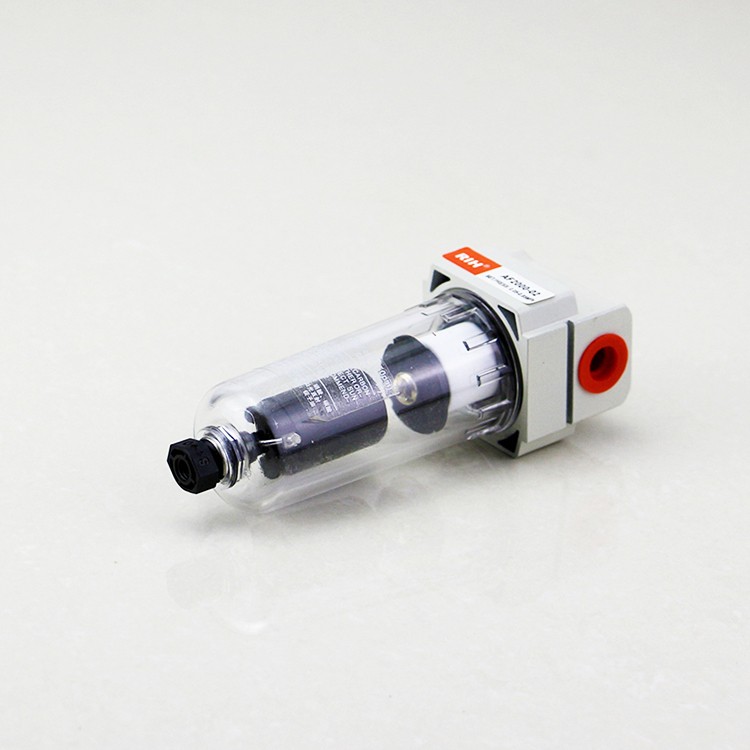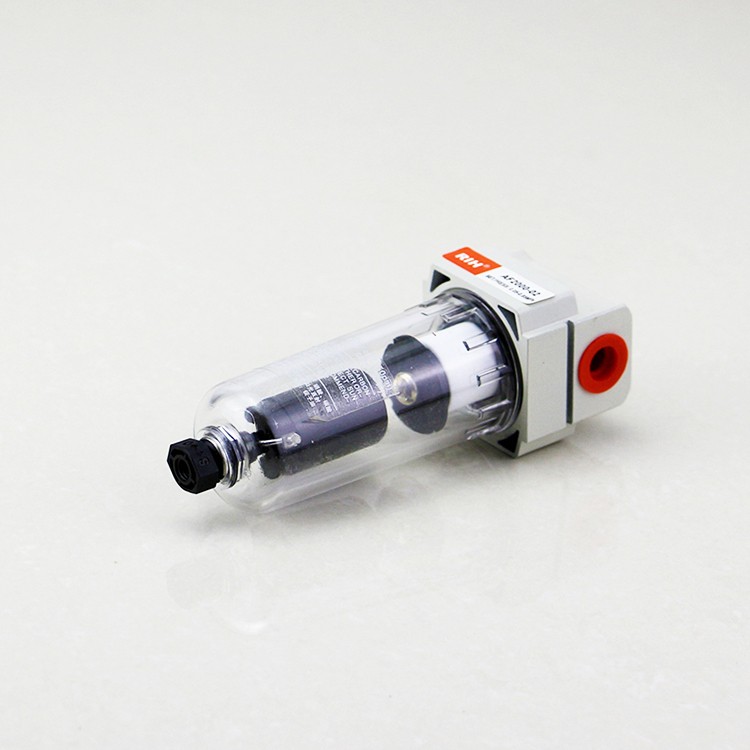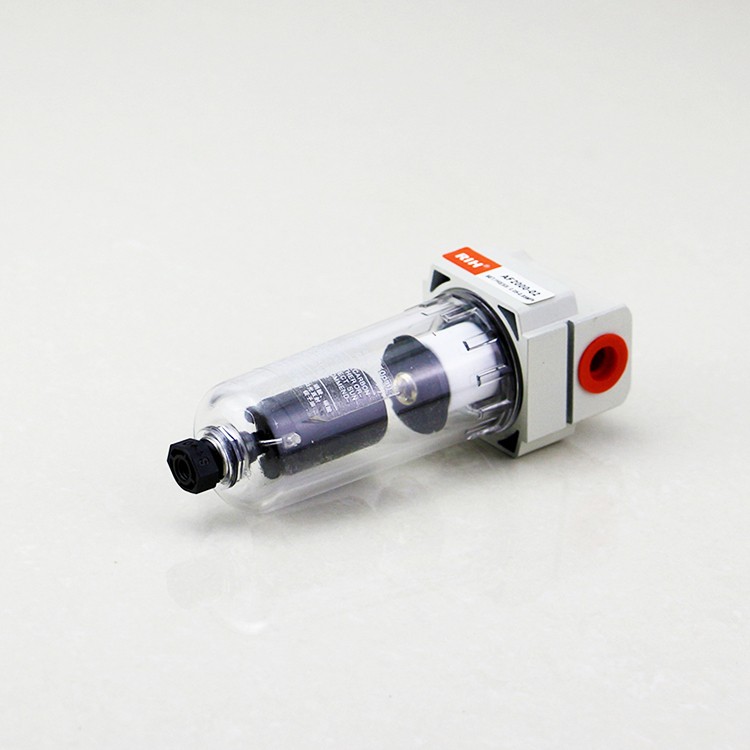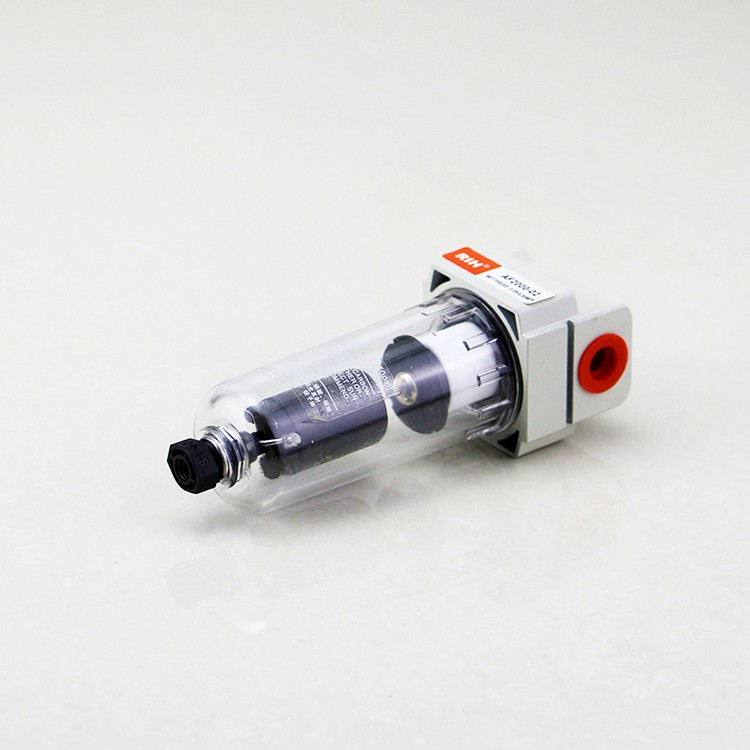Pneumatic Filter(SMC Type)
What Is a Pneumatic Filter?
Definition and Function
A Pneumatic Filter is a critical component in any pneumatic system, such as those extensively utilized in automation equipment and machine building industries. This device serves to remove contaminants like dust, dirt, moisture, and oil aerosols from compressed air. This purification process is essential for maintaining the efficiency, reliability, and longevity of pneumatic equipment.
Importance in Pneumatic Systems
In a sector where precision and reliability are paramount, like in textile, chemical, or papermaking industries, the quality of air used in pneumatic systems cannot be compromised. A pneumatic filter ensures that the air driving your pneumatic actuators, solenoid valves, and other components is clean and free from damaging particles. This not only optimizes performance but also minimizes wear and tear, reducing maintenance costs and downtime.
Types of Pneumatic Filters
- General Purpose Filters: Remove particles and water droplets.
- Coalescing Filters: Specifically designed to eliminate oil aerosols and finer particles.
- Activated Carbon Filters: Used for removing oil vapors and odors, especially critical in applications requiring extremely pure air.
Integration with Your Products
Given Yueqing Right Pneumatic Co., Ltd.'s (RIH) expertise in pneumatic and electronic products, integrating high-quality pneumatic filters into your product line could significantly enhance the overall value proposition of your pneumatic solutions. This addition could be a strategic move to ensure that your customers not only receive top-tier pneumatic components but also have the means to maintain their efficiency and longevity.
Conclusion
In conclusion, a pneumatic filter is more than just a component; it's an assurance of quality and reliability in pneumatic systems. By offering these alongside your main products like pneumatic cylinders, solenoid valves, and air treatment units, RIH can position itself as a comprehensive solution provider in the automation and pneumatic sectors.
What does a pneumatic filter do?
A Pneumatic Filter is a crucial component in the realm of pneumatic systems, particularly for businesses like Yueqing Right Pneumatic Co., Ltd. (RIH) that are involved in manufacturing and supplying pneumatic products. The primary role of a pneumatic filter is to purify compressed air used in these systems. Let's delve into its key functions:
-
Removal of Particulates: It effectively filters out dust, dirt, and other particulate matter from the compressed air. This is vital as these particles can cause wear and damage to pneumatic components such as cylinders and valves.
-
Moisture Elimination: Pneumatic filters are instrumental in removing water vapor and droplets from the air. This is crucial in preventing moisture-related issues like corrosion and freezing in pneumatic equipment.
-
Oil Aerosol Filtration: In systems where oil-lubricated compressors are used, these filters play a significant role in capturing oil aerosols. Keeping the air oil-free is essential for maintaining the integrity and performance of pneumatic tools and machinery.
How does a compressed air filter work?
For a company like Yueqing Right Pneumatic Co., Ltd. (RIH), which is deeply entrenched in the manufacturing of pneumatic and electronic products, understanding the workings of a compressed air filter is fundamental. These filters are pivotal in ensuring the purity and efficiency of compressed air, a key driver in pneumatic systems. Here's a concise breakdown of how they operate:
-
Inlet and Filtration Process:
- Compressed air enters the filter.
- It passes through a filter media, which is typically made of materials like fiber, mesh, or foam.
- This media is designed to trap and remove particulates, dust, and other impurities from the air.
-
Coalescing Mechanism (for Coalescing Filters):
- These filters are specially designed to capture minute oil and water aerosols.
- The coalescing process causes these tiny droplets to merge into larger ones as they pass through the filter media.
- These larger droplets are then separated from the air and collected in a sump at the bottom of the filter.
-
Moisture Separation:
- Moisture in the air condenses into water droplets as it cools within the filter.
- These droplets are then captured by the filter media or in a moisture separator if the filter is equipped with one.
- The collected water is typically drained away through a manual or automatic drain.
How do you clean a pneumatic filter?
Importance of Regular Cleaning
For companies like Yueqing Right Pneumatic Co., Ltd. (RIH), which specializes in pneumatic and electronic products, emphasizing the importance of regular maintenance, including cleaning pneumatic filters, is crucial. Proper cleaning ensures optimal performance and longevity of pneumatic systems. Here's a step-by-step guide to cleaning a pneumatic filter effectively:
Step-by-Step Cleaning Process
-
Safety First:
- Ensure the system is depressurized before starting. Disconnect any power sources to avoid accidental activation.
-
Disassembly:
- Carefully disassemble the pneumatic filter from the system. This typically involves removing the filter from its housing. Consult the manufacturer's manual for specific instructions to avoid damage.
-
Inspection:
- Before cleaning, inspect the filter element and housing for any signs of wear or damage. Look for cracks, holes, or other indicators that a replacement might be necessary.
-
Cleaning the Filter Element:
- For a reusable filter element, gently clean it with a suitable solvent or warm soapy water, depending on the type of contamination and the filter material. Avoid using harsh chemicals that could damage the filter media.
- Use a soft brush or a blast of compressed air (at a low pressure) to remove loose particulates. Ensure you're wearing appropriate safety gear to protect against inhalation of dust.
-
Drying:
- Allow the filter element to dry completely. It's crucial that no moisture remains as this could lead to mold growth or corrosion once reassembled.
-
Cleaning the Housing:
- Wipe the inside of the filter housing with a clean, lint-free cloth. If necessary, use a mild cleaner to remove any oil or residue.
-
Reassembly:
- Once both the filter element and housing are clean and dry, reassemble the filter. Make sure all seals and o-rings are properly seated to prevent leaks.
-
Testing:
- After reassembly, reinstall the filter into the system. Test the system for proper operation and check for any leaks.
Additional Tips
- Consult the Manual: Always refer to the manufacturer's guidelines for specific cleaning instructions and recommendations.
- Replacement Schedule: Some filter elements are disposable and should be replaced rather than cleaned. Know the type of filter your system uses.
- Record Maintenance: Keep a log of cleaning and replacement activities to help predict future maintenance needs and ensure optimal system performance.
Strategic Maintenance for RIH
For RIH, highlighting the importance of regular maintenance, including the cleaning of pneumatic filters, can be a significant aspect of your customer service. Offering guidance on maintenance practices not only helps customers keep their systems running smoothly but also establishes RIH as a trusted advisor in the pneumatic industry.


